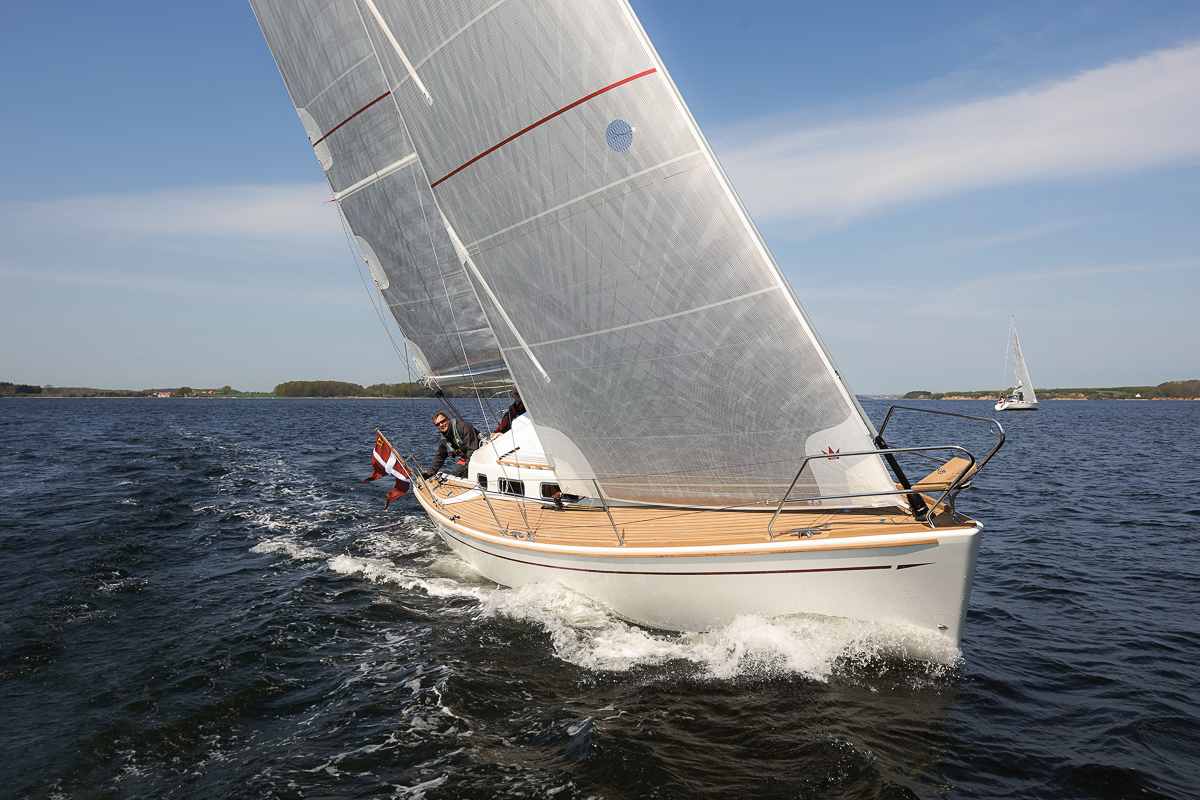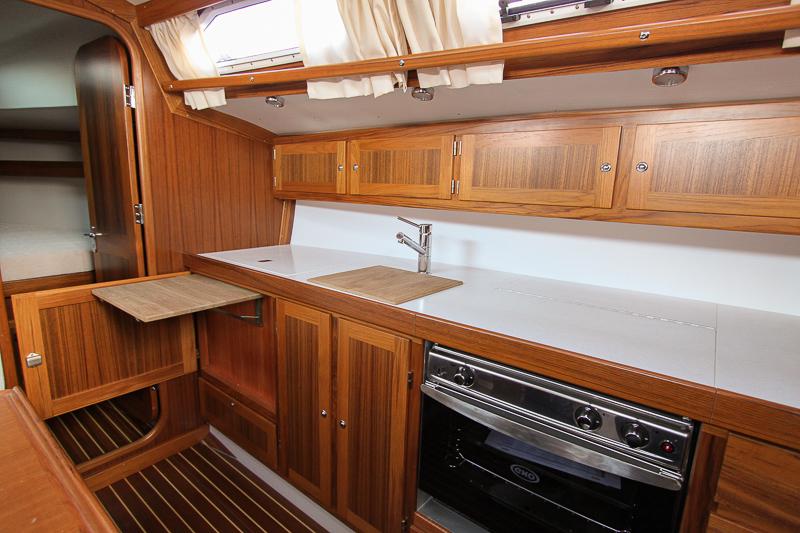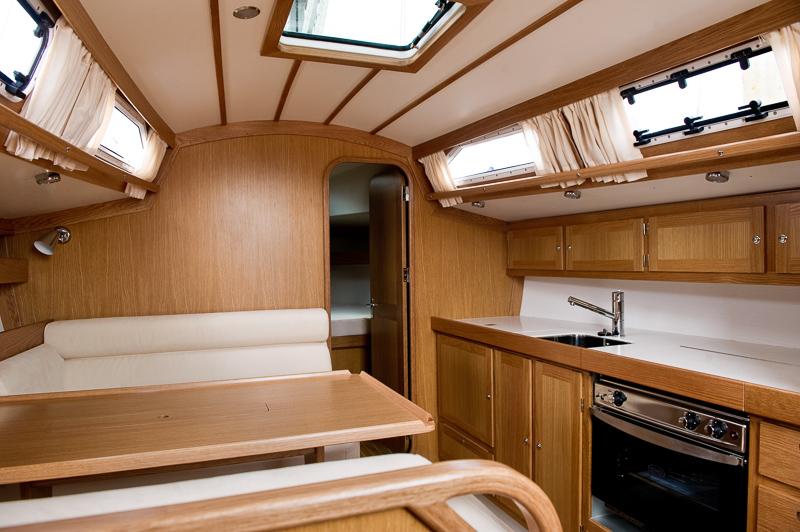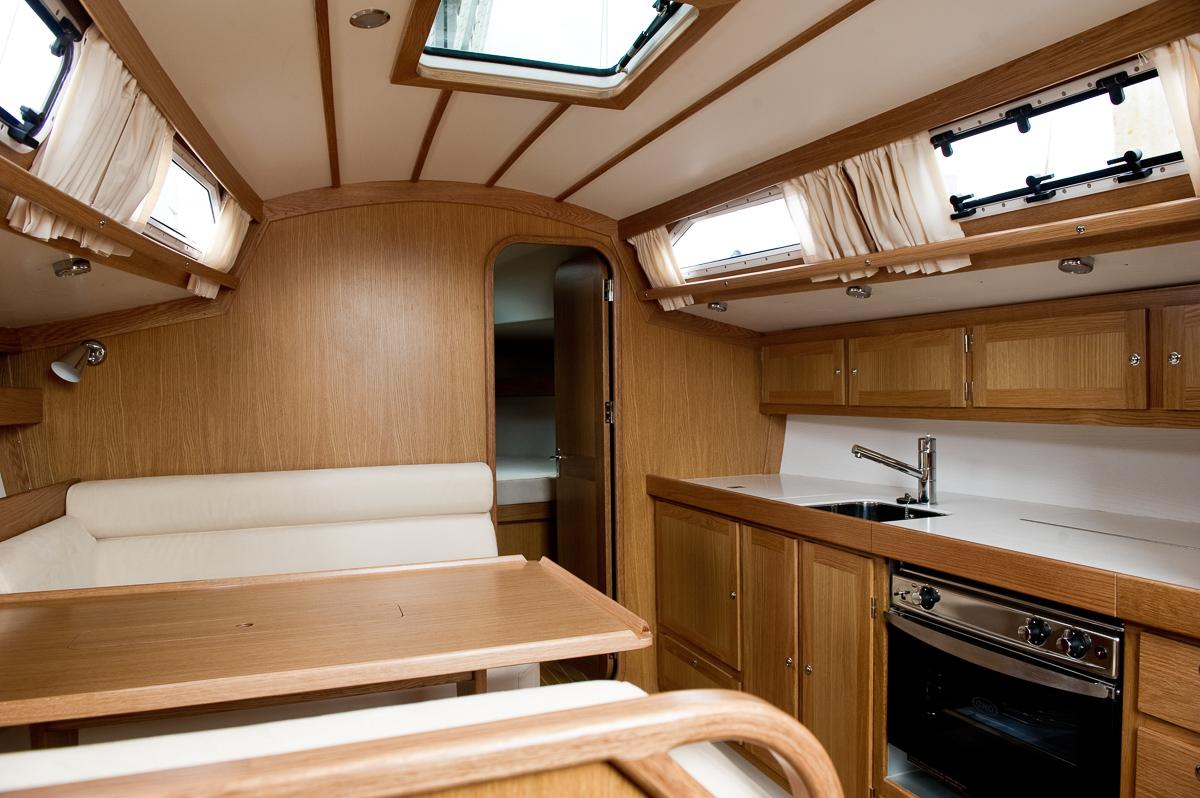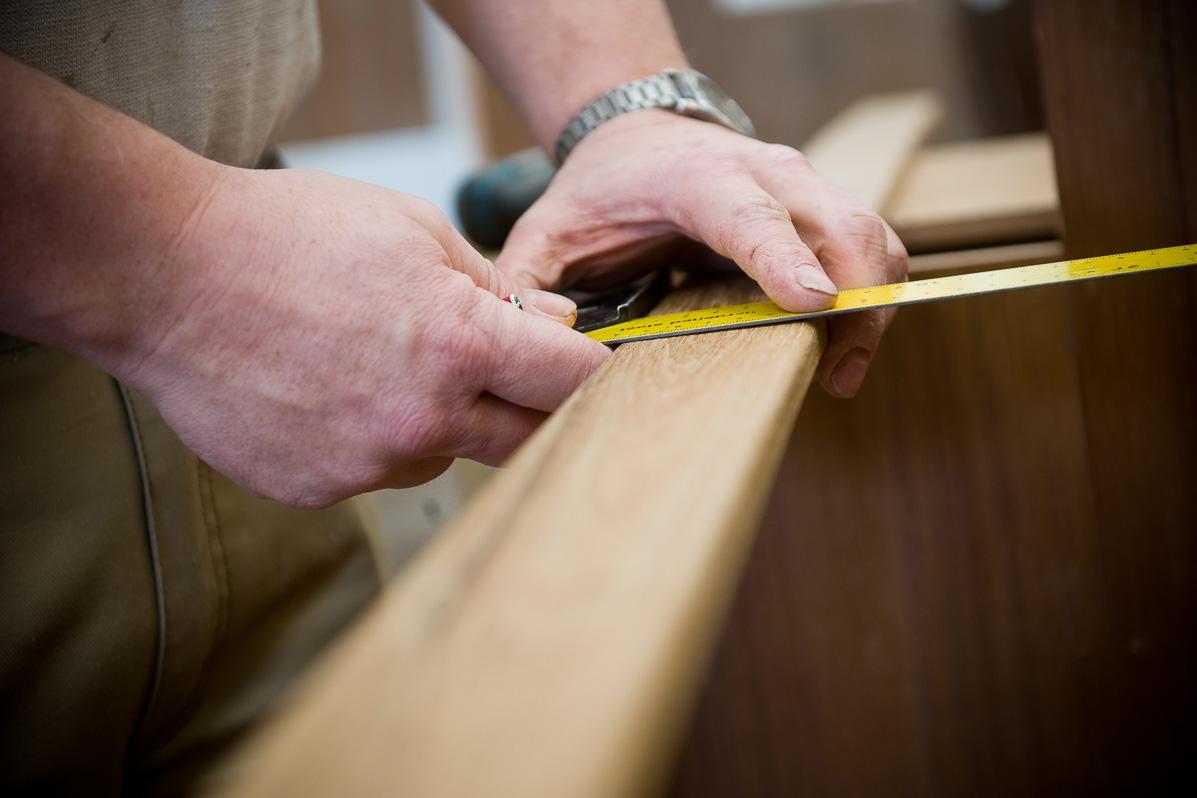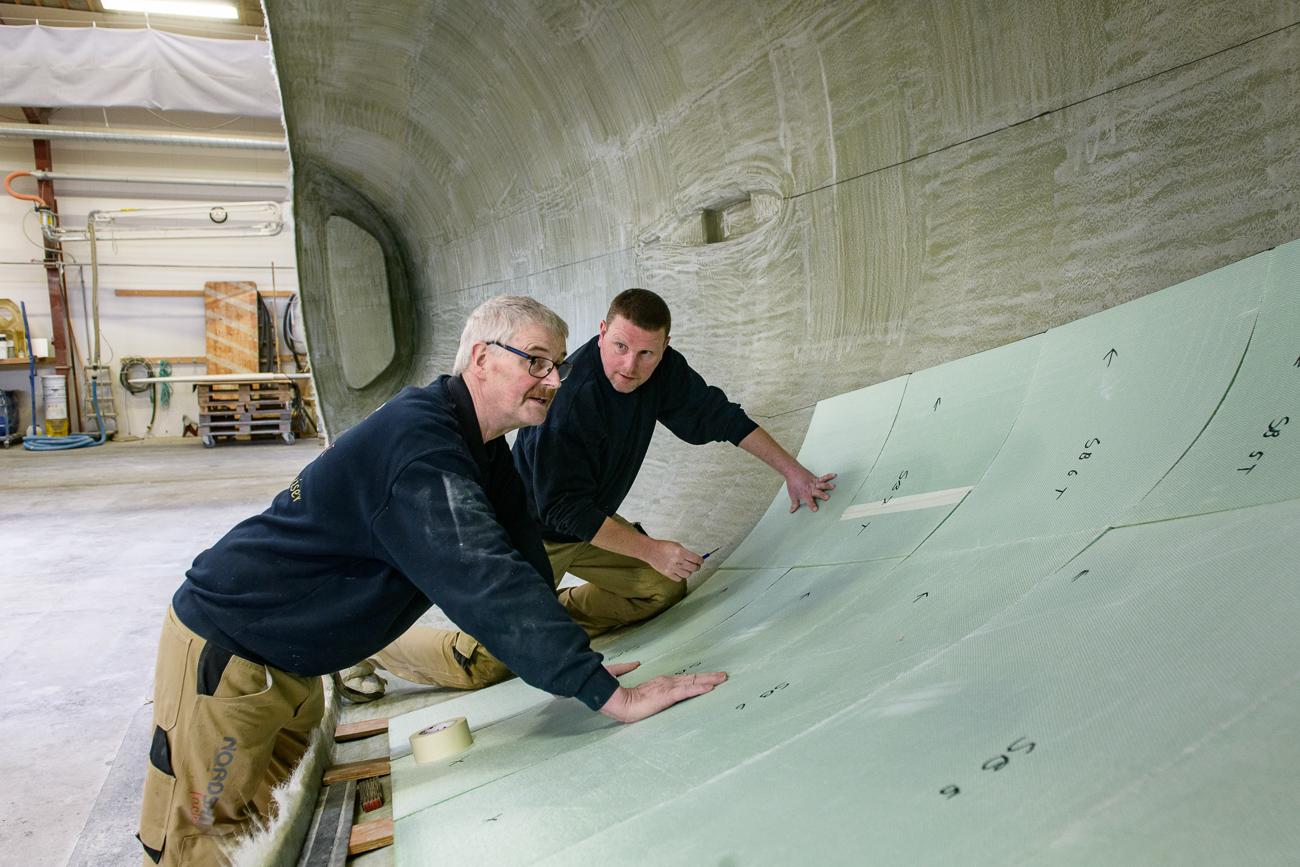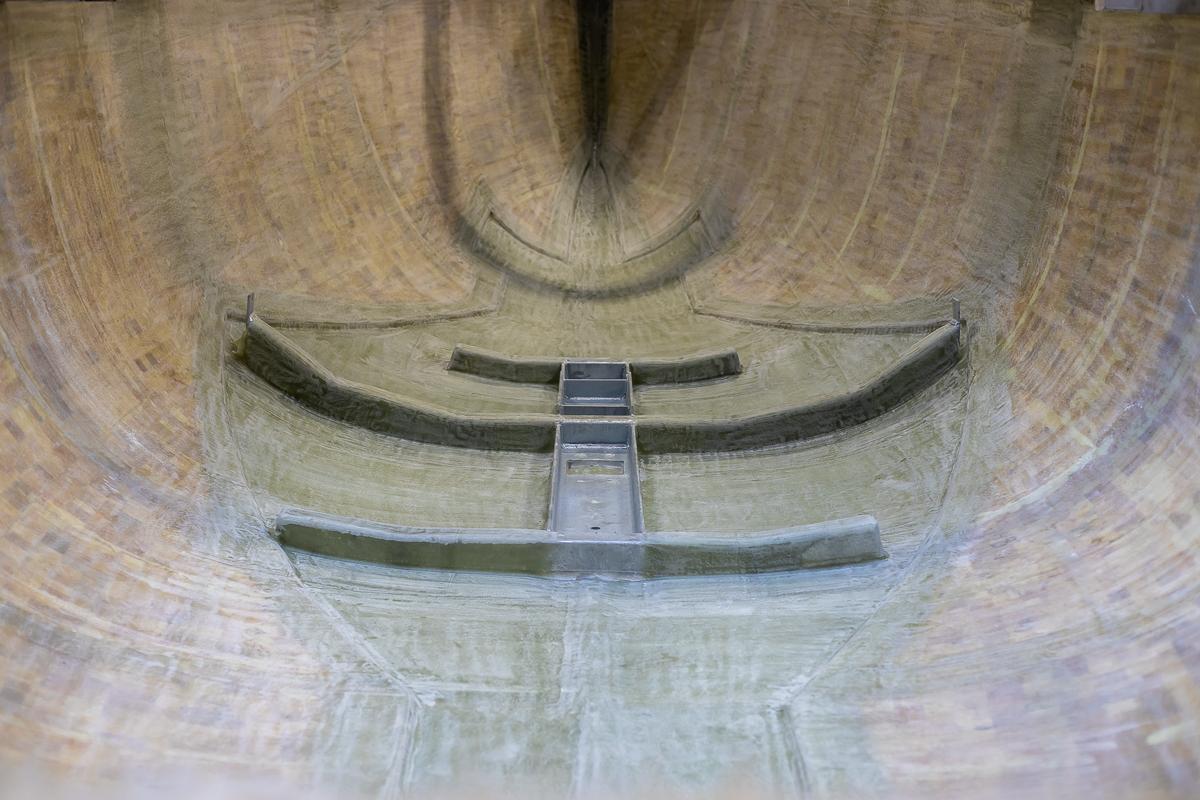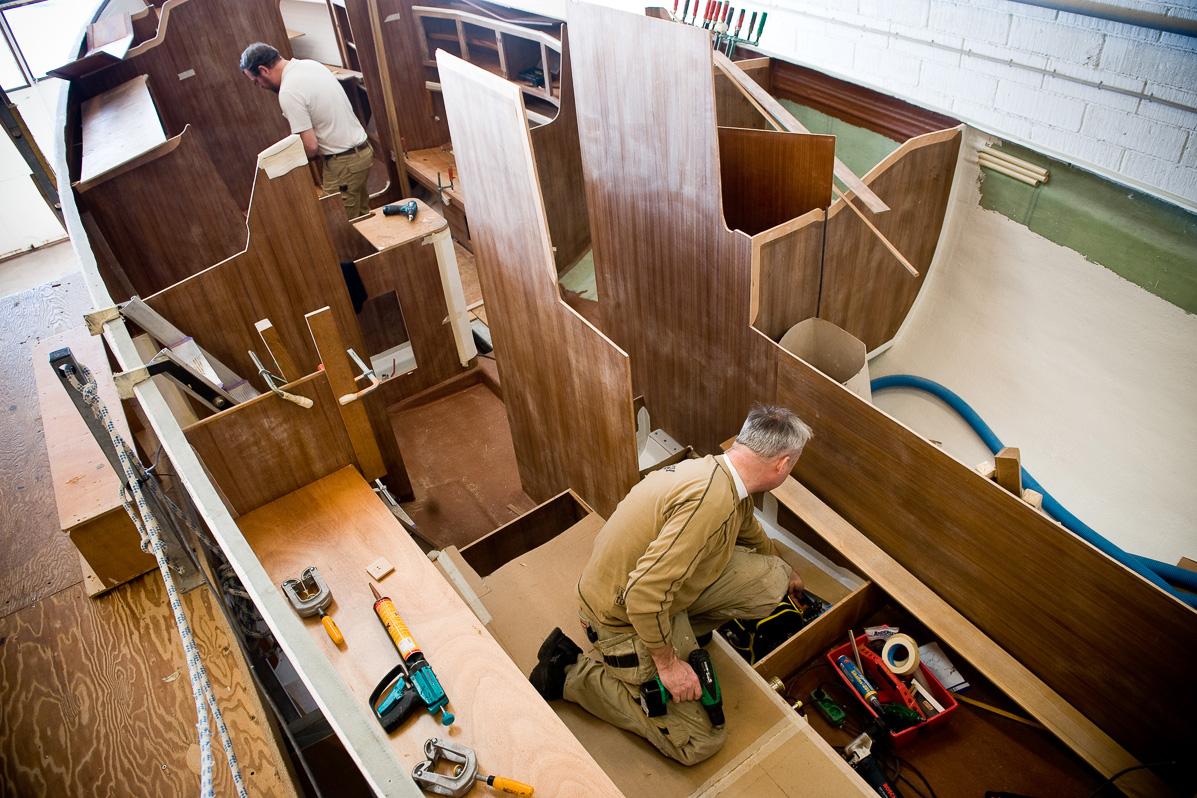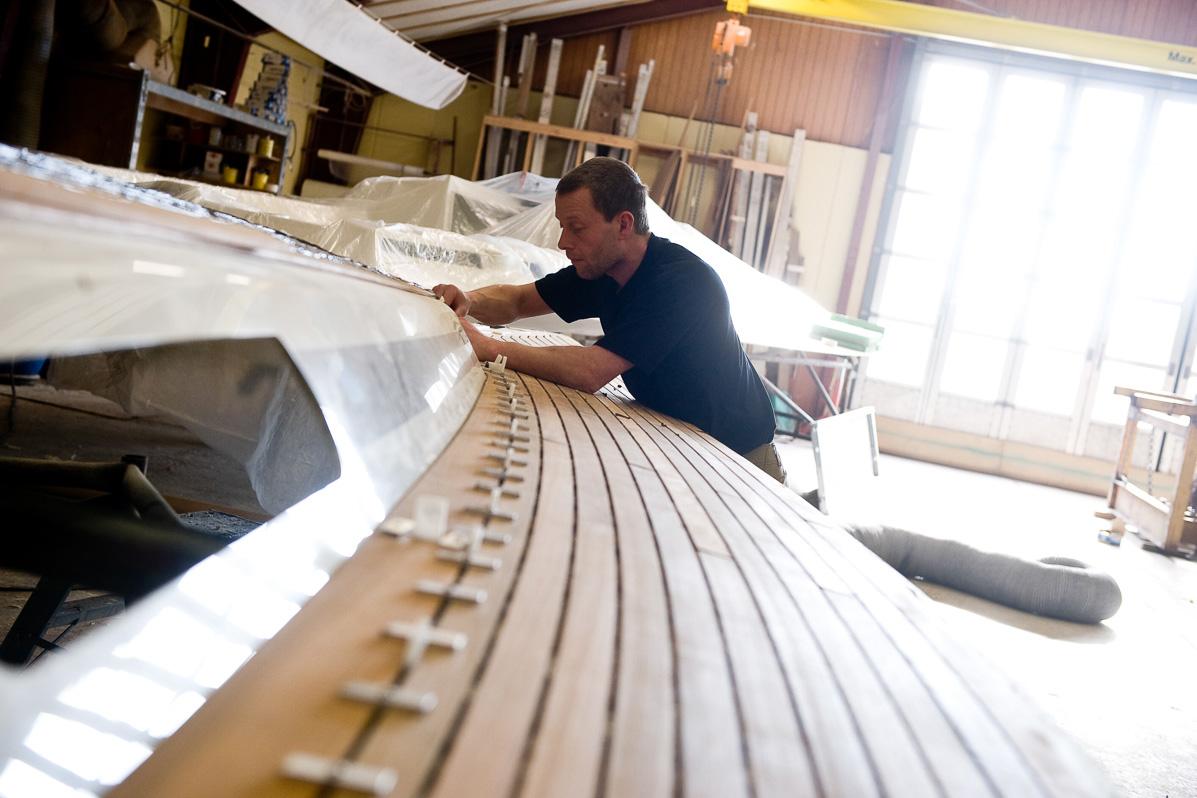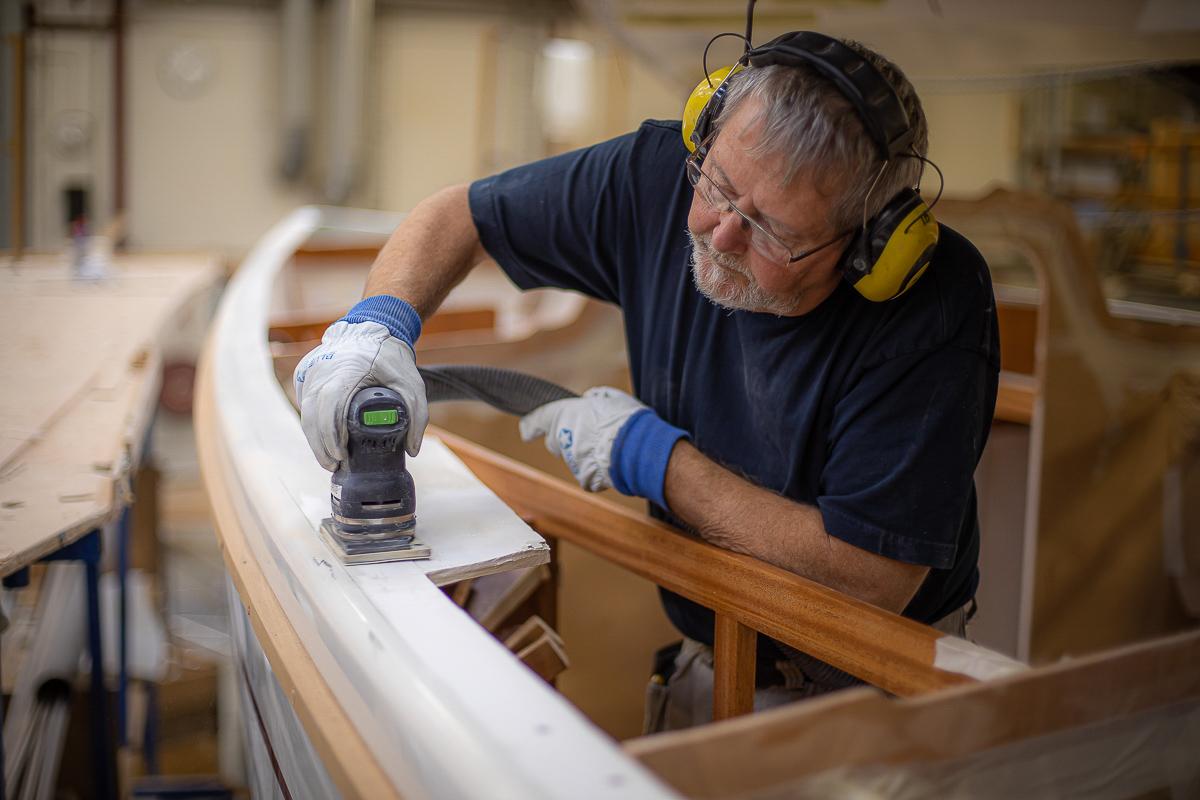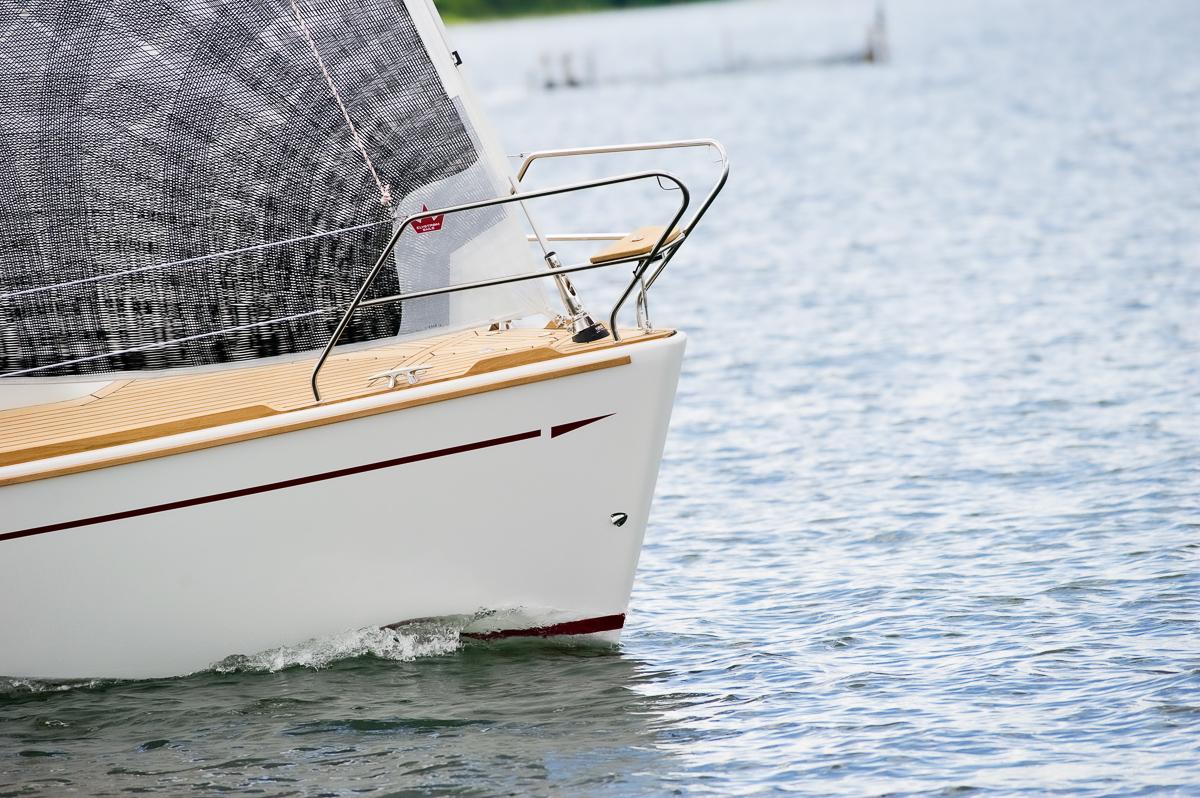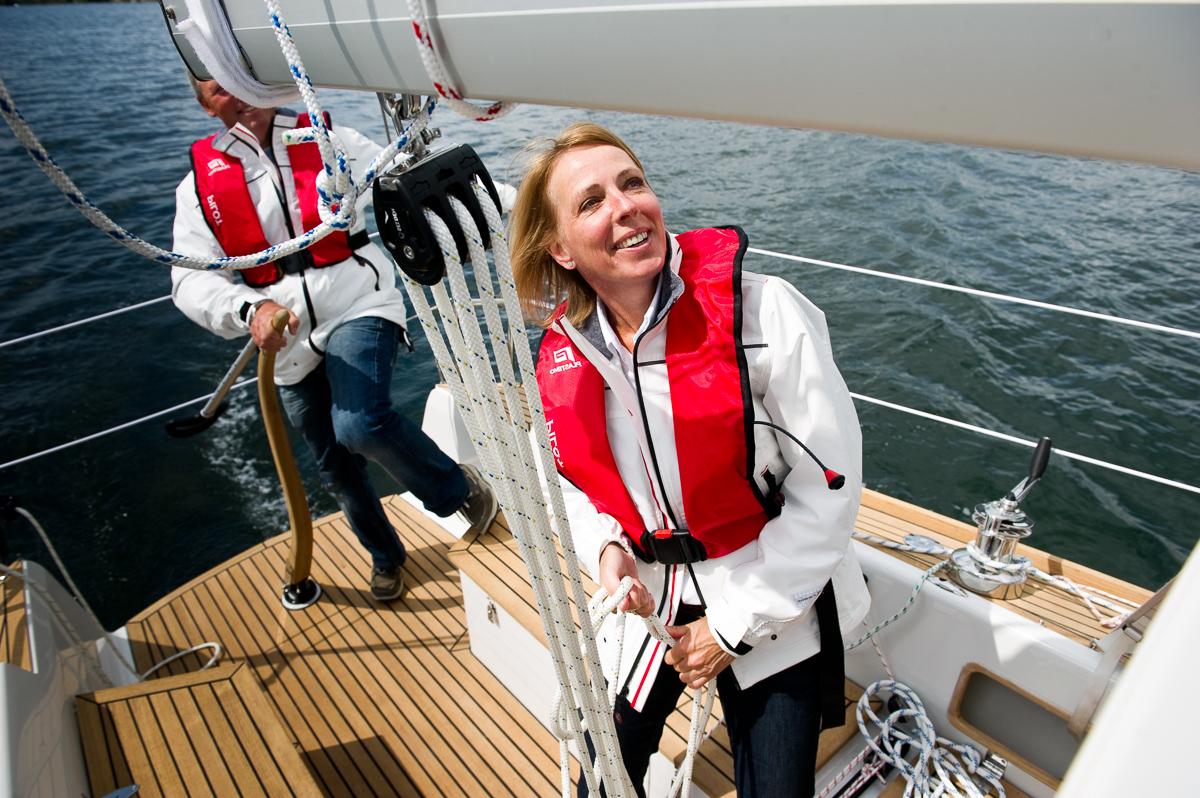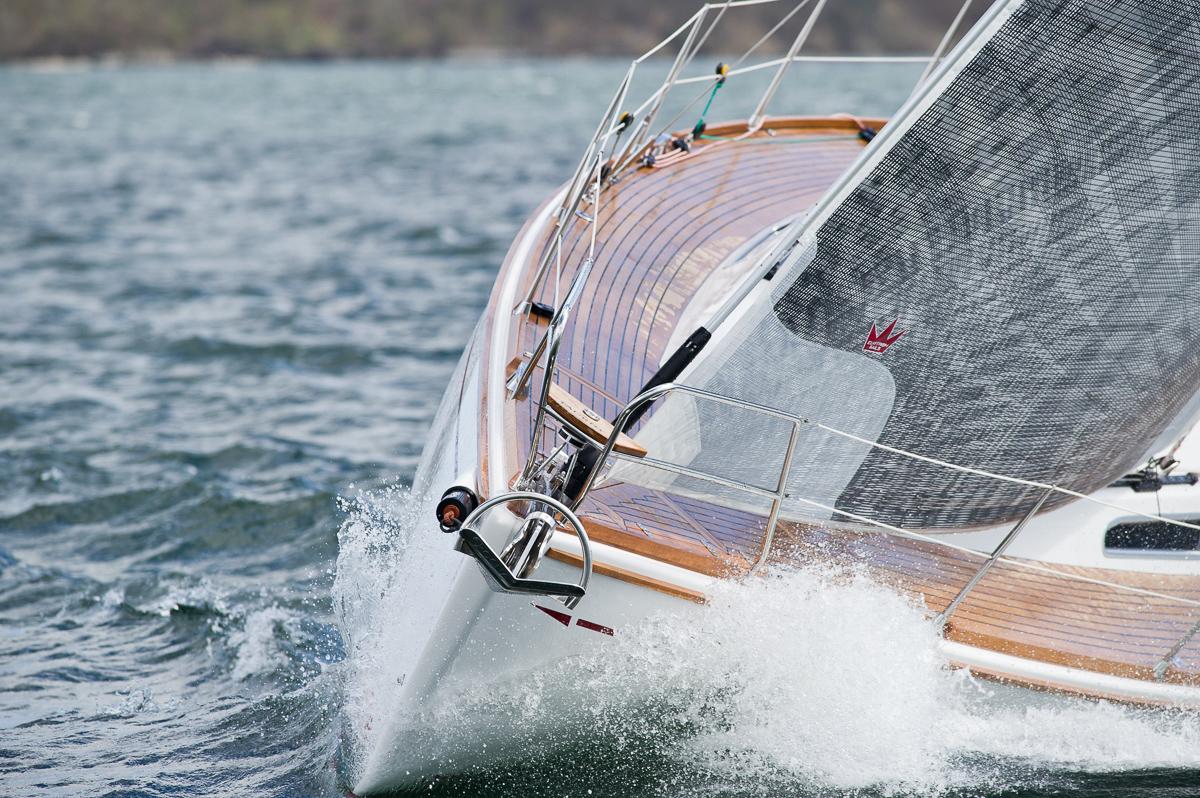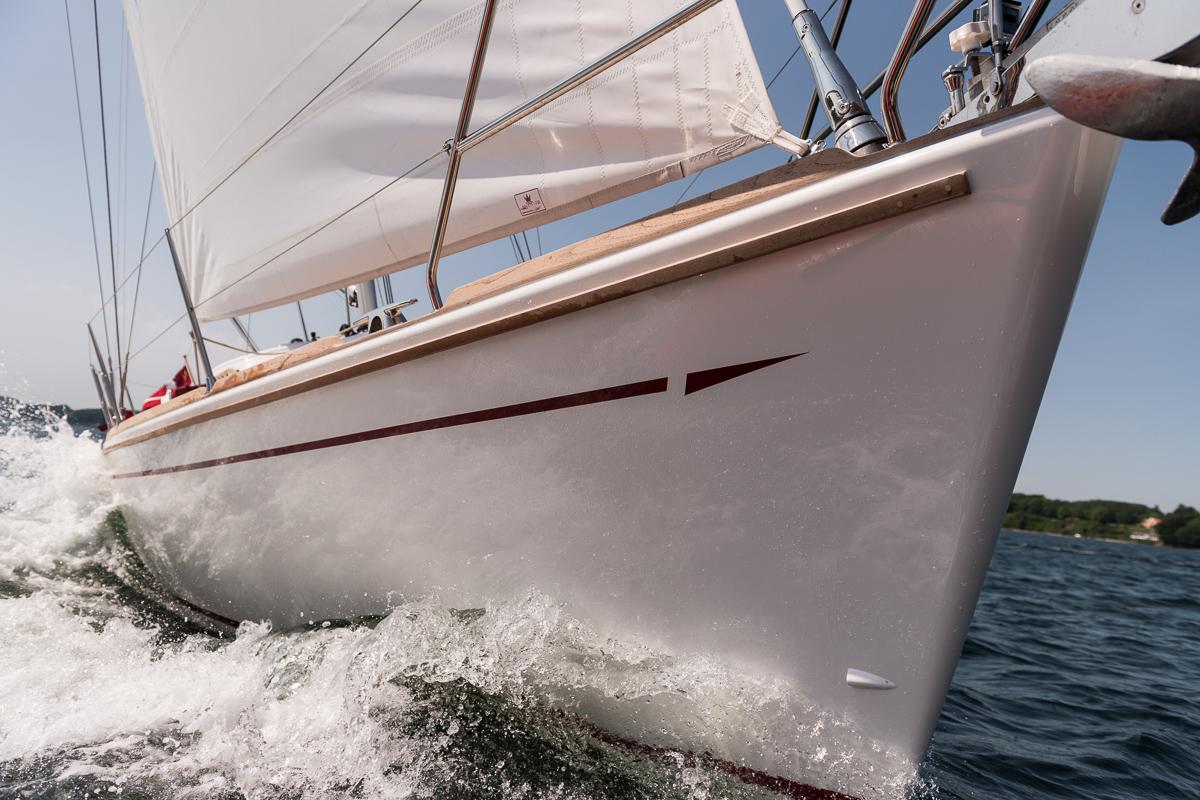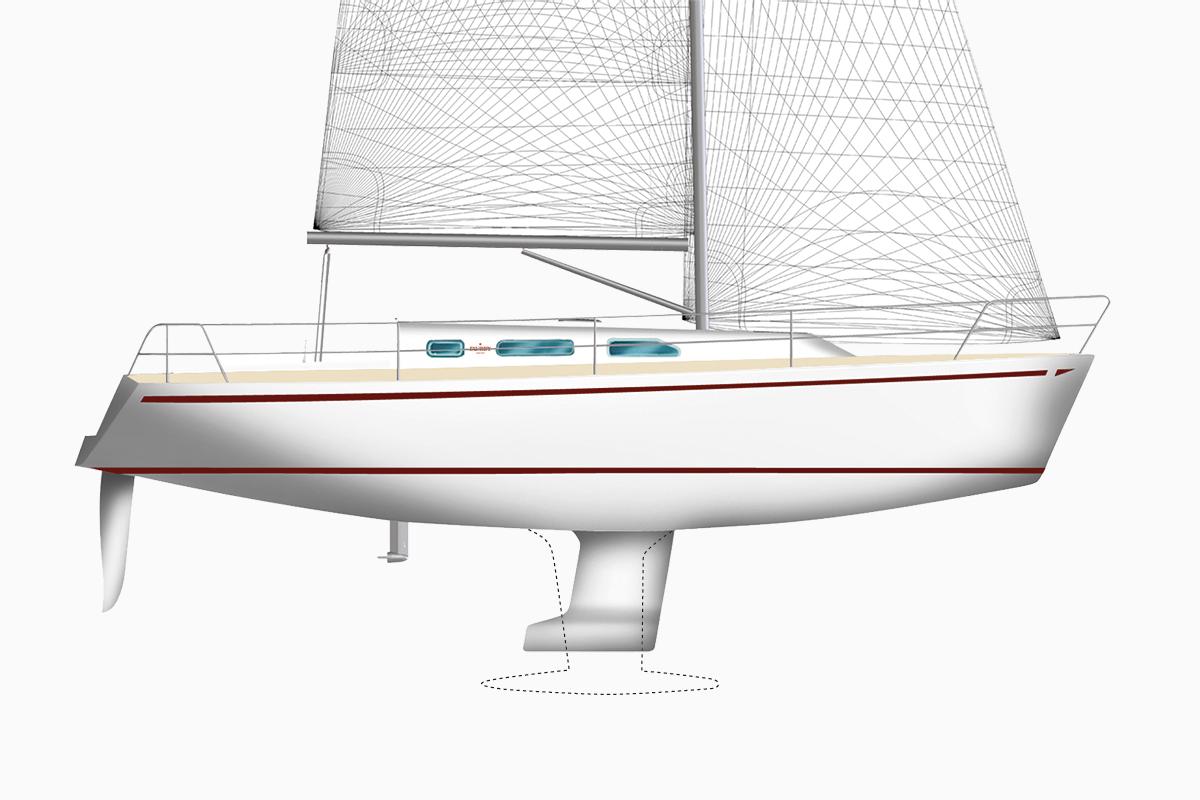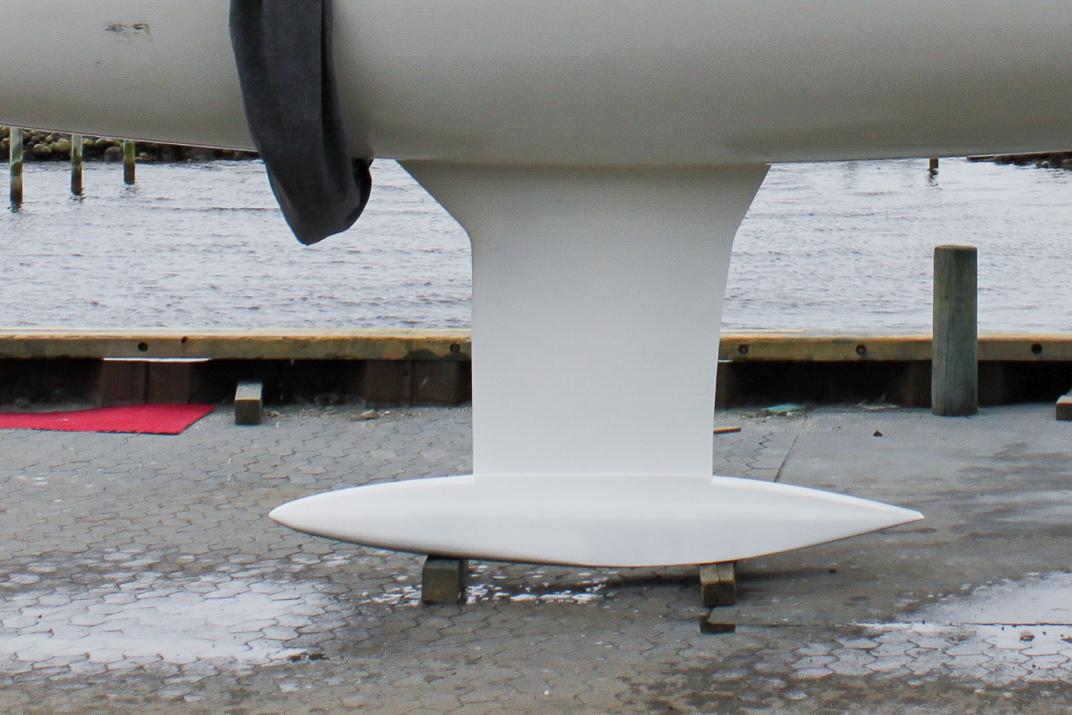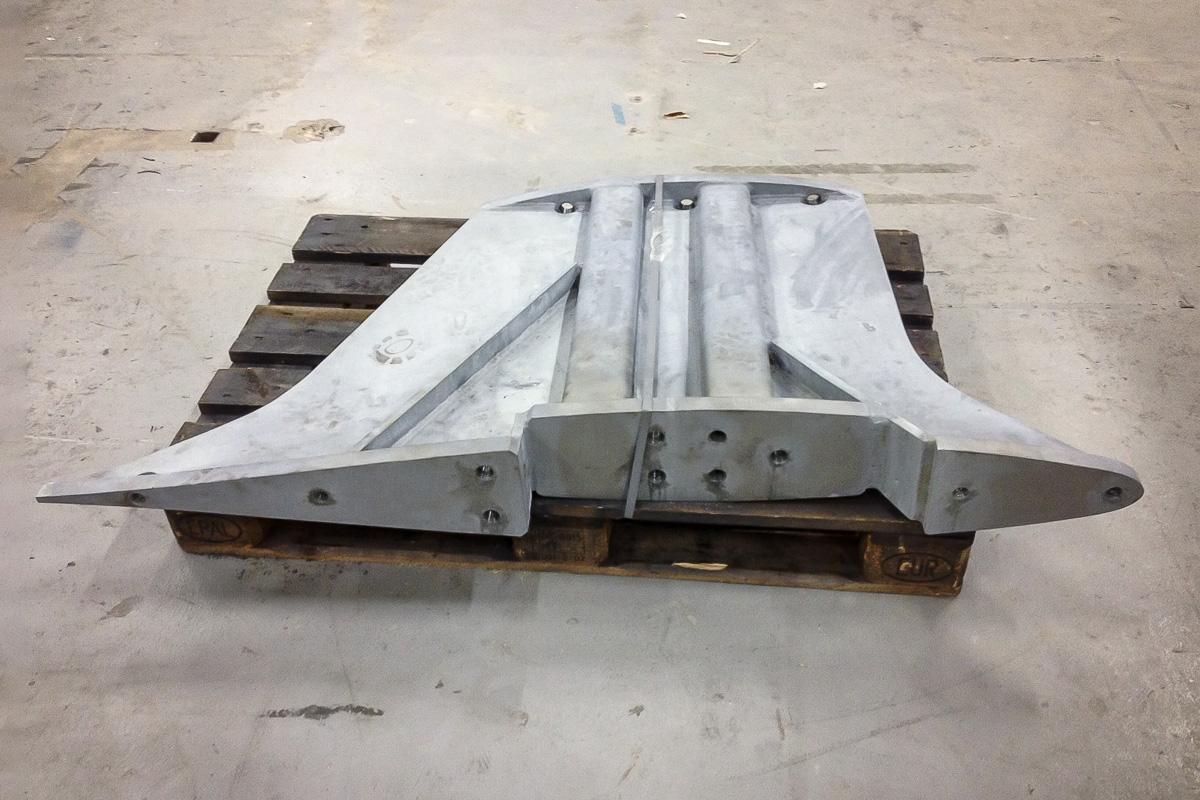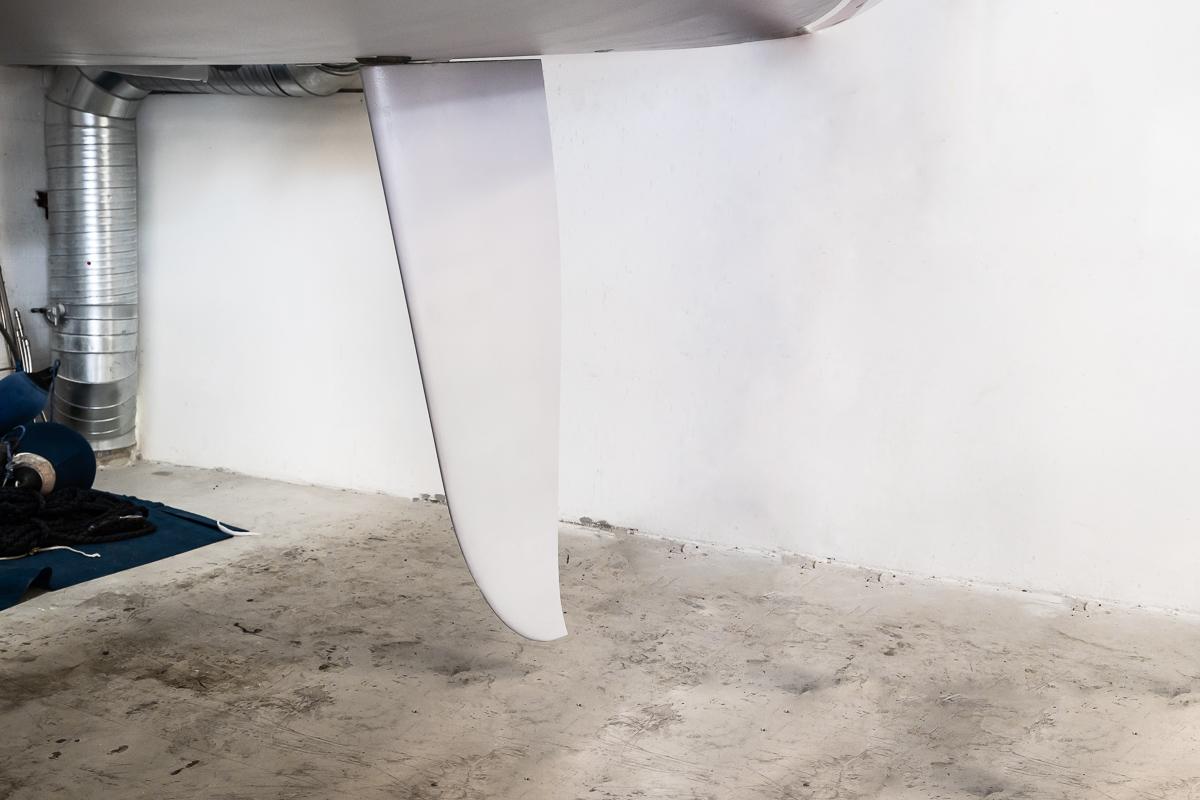Specification
Faurby 335
Currently, the smallest yacht we produce is the Faurby 335. She is designed to be sailed as easily by one person as she can be with a crew. All sail controls are within arms’ reach from the tiller and all lines are brought aft, making her effortless to sail.
The seating is low enough in the cockpit to provide good protection, while outboard of the seatbacks the sidedecks have been raised to give both helm and crew a better view forward and keep everyone from sitting on a wet deck.
The long cockpit makes the most of the deck space and has excellent stowage, accessed via the starboard seat. The cockpit opens out to the transom giving outstanding access from either dock, dinghy or bathing ladder. When you’re sailing it gives a connection to the water flowing past, without feeling exposed.
Down below, she devotes space on board to the most frequently used areas. The forward bulkhead can be positioned either forward or aft of the mast, which allows you to increase the size of either the forward cabin or saloon depending on your preference. Both options still offer a chart/navigation table area by the companionway. One popular layout includes a linear galley to starboard and facing seats making a dinette. The dinette converts to a double berth for occasional guests while there is more berth space aft. Another popular option is for an L-shaped saloon with seating on both sides and an L-shaped galley further aft. But as with all Faurby yachts, anything is possible.
